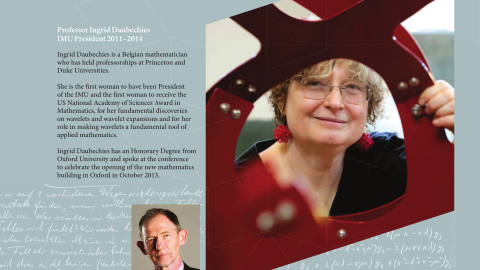Higher regularity of the free boundary in the elliptic thin obstacle problem
Abstract
In this talk, I will describe how to use the partial hodograph-Legendre transformation to show the analyticity of the free boundary in the elliptic thin obstacle problem. In particular, I will discuss the invertibility of this transformation and show that the resulting fully nonlinear PDE has a subelliptic structure. This is based on a joint work with Herbert Koch and Arshak Petrosyan.
Interface motion in ill-posed diffusion equations
Abstract
ill-posed PDE, thus any limit dynamics might feature measure-valued solutions, phases interfaces, and hysteretic interface motion.
interfaces with non-trivial dynamics and study the rigorous passage to the limit for a piecewise affine nonlinearity.
Towards an effective theory for nematic elastomers in a membrane limit
Abstract
For nematic elastomers in a membrane limit, one expects in the elastic theory an interplay of material and structural non-linearities. For instance, nematic elastomer material has an associated anisotropy which allows for the formation of microstructure via nematic reorientation under deformation. Furthermore, polymeric membrane type structures (of which nematic elastomer membranes are a type) often wrinkle under applied deformations or tractions to avoid compressive stresses. An interesting question which motivates this study is whether the formation of microstructure can suppress wrinkling in nematic elastomer membranes for certain classes of deformation. This idea has captured the interest of NASA as they seek lightweight and easily deployable space structures, and since the use of lightweight deployable membranes is often limited by wrinkling.
In order to understand the interplay of these non-linearities, we derive an elastic theory for nematic elastomers of small thickness. Our starting point is three-dimensional elasticity, and for this we incorporate the widely used model Bladon, Terentjev and Warner for the energy density of a nematic elastomer along with a Frank elastic penalty on nematic reorientation. We derive membrane and bending limits taking the thickness to zero by exploiting the mathematical framework of Gamma-convergence. This follows closely the seminal works of LeDret and Raoult on the membrane theory and Friesecke, James and Mueller on the bending theory.
J.C. Maxwell's 1879 Paper on Thermal Transpiration and Its Relevance to Contemporary PDE
Abstract
Martensitic Disclinations, Modeling Analysis and Experiments
On Roth's theorem on arithmetic progression
Abstract
In 1953 Roth proved that any positive density subset of the integers contains a non-trivial three term arithmetic progression. I will present a recent quantitative improvement for this theorem, give an overview of the main ideas of the proof, and discuss its relation to other recent work in the area. I will also discuss some closely related problems.


